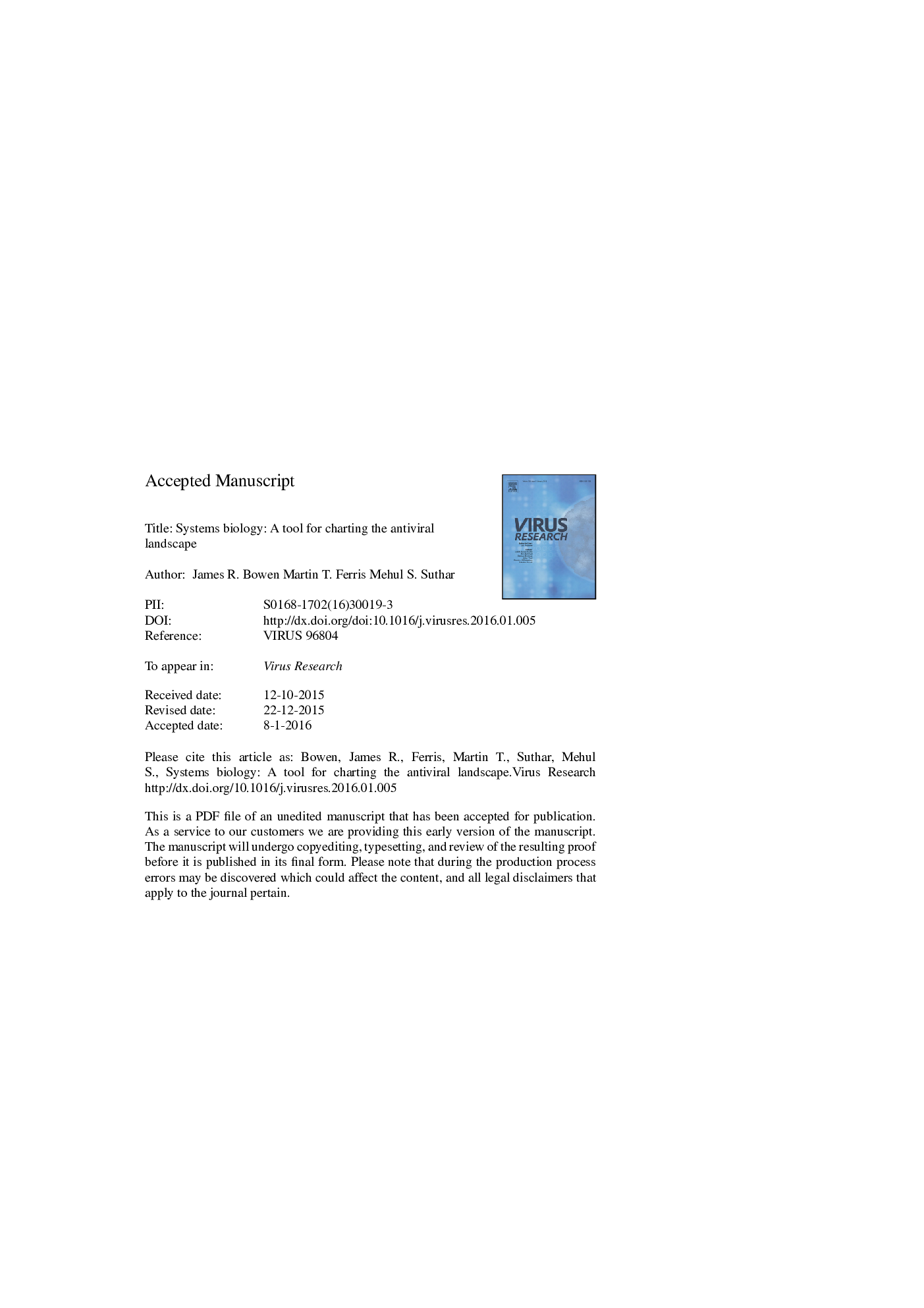| Article ID | Journal | Published Year | Pages | File Type |
|---|---|---|---|---|
| 6142105 | Virus Research | 2016 | 20 Pages |
Abstract
The host antiviral programs that are initiated following viral infection form a dynamic and complex web of responses that we have collectively termed as “the antiviral landscape”. Conventional approaches to studying antiviral responses have primarily used reductionist systems to assess the function of a single or a limited subset of molecules. Systems biology is a holistic approach that considers the entire system as a whole, rather than individual components or molecules. Systems biology based approaches facilitate an unbiased and comprehensive analysis of the antiviral landscape, while allowing for the discovery of emergent properties that are missed by conventional approaches. The antiviral landscape can be viewed as a hierarchy of complexity, beginning at the whole organism level and progressing downward to isolated tissues, populations of cells, and single cells. In this review, we will discuss how systems biology has been applied to better understand the antiviral landscape at each of these layers. At the organismal level, the Collaborative Cross is an invaluable genetic resource for assessing how genetic diversity influences the antiviral response. Whole tissue and isolated bulk cell transcriptomics serves as a critical tool for the comprehensive analysis of antiviral responses at both the tissue and cellular levels of complexity. Finally, new techniques in single cell analysis are emerging tools that will revolutionize our understanding of how individual cells within a bulk infected cell population contribute to the overall antiviral landscape.
Keywords
Related Topics
Life Sciences
Immunology and Microbiology
Virology
Authors
James R. Bowen, Martin T. Ferris, Mehul S. Suthar,
